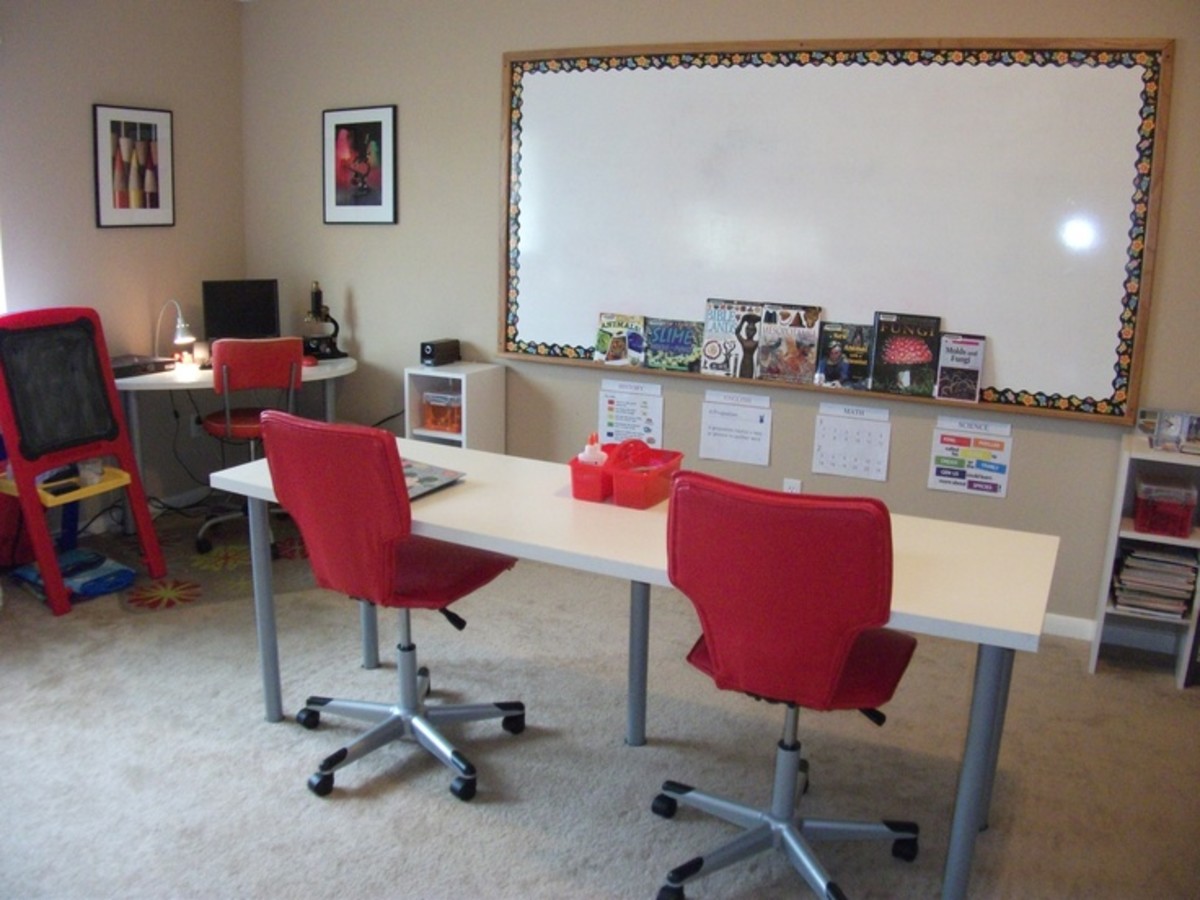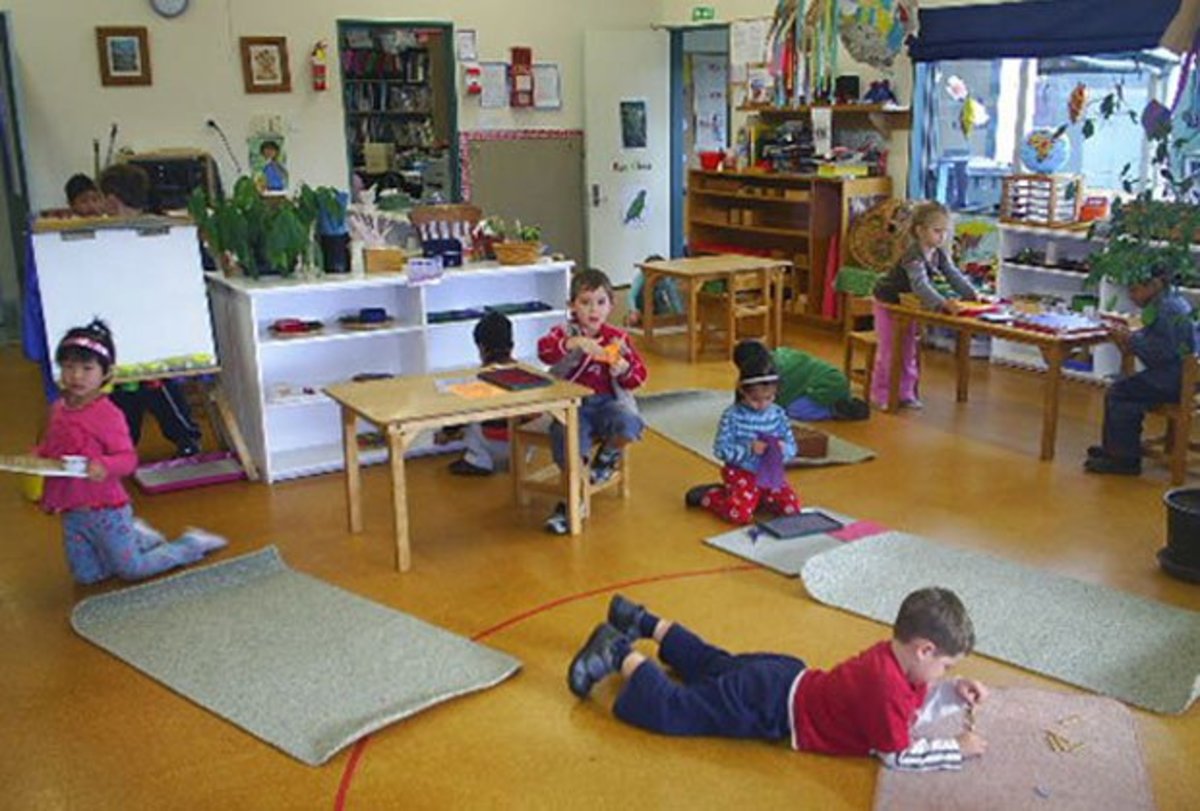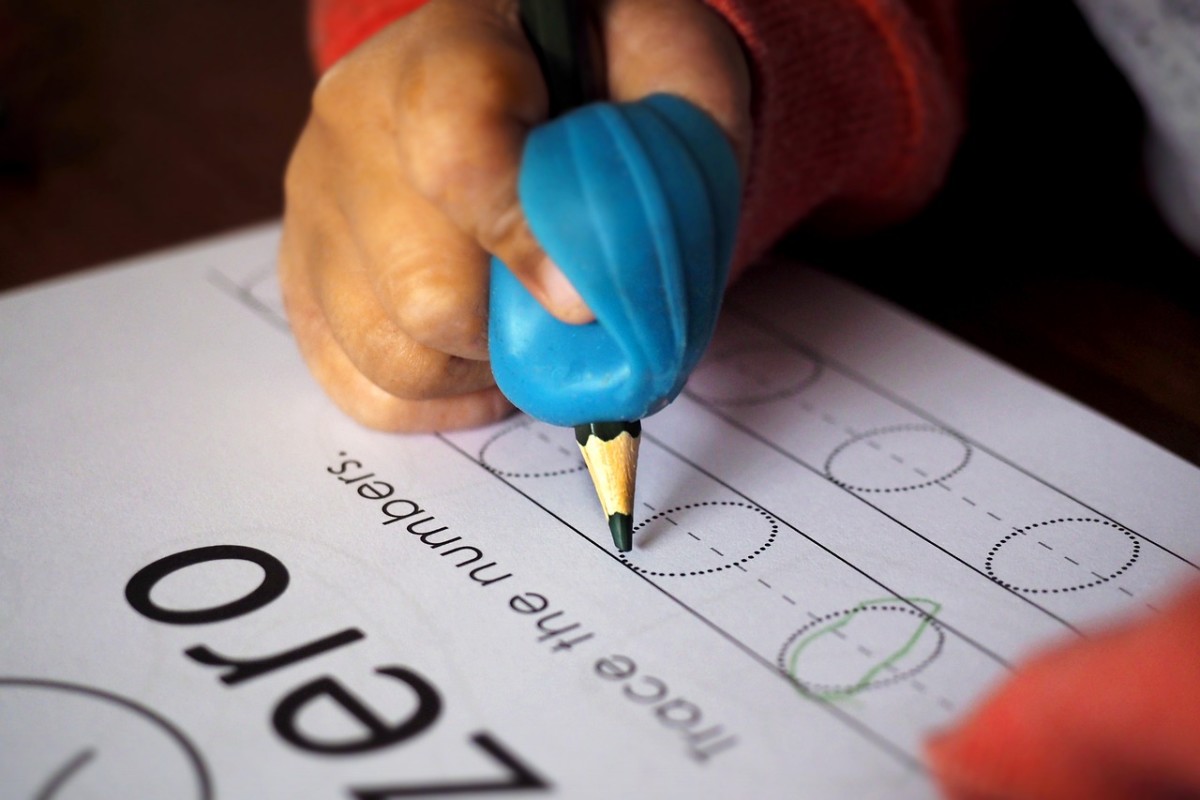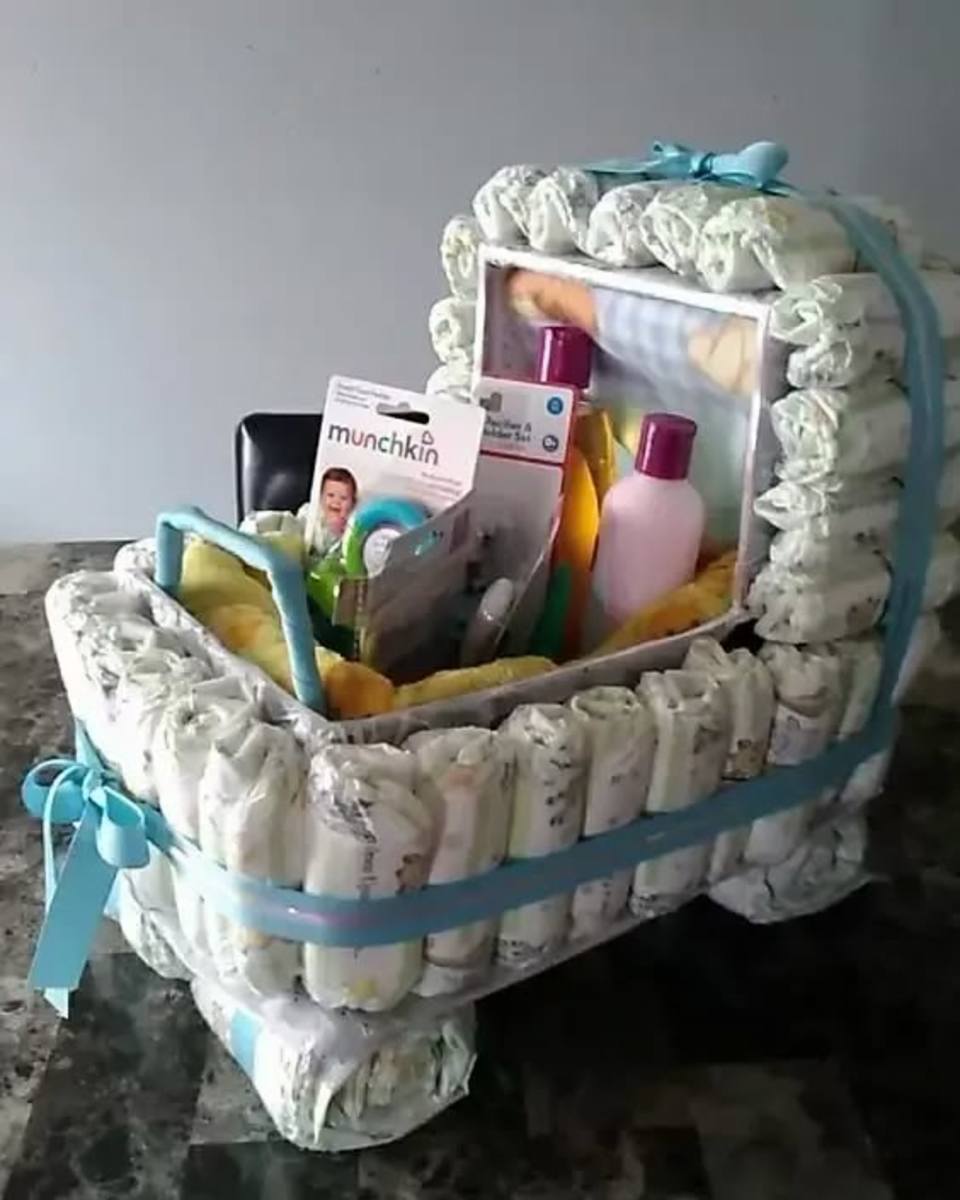Choosing the Right Preschool For Your Child

Picking a Preschool
The task of picking a preschool can be stressful and daunting, as you begin the process of finding a place you trust to take care of and teach your child. You want quality and consistency, but you also want affordability and convenience. Maybe you want a religiously affiliated school, and maybe you're adamant your child's school be secular. Maybe you're totally into Montessori, maybe you hate it, or maybe, like a lot of people, you don't even know what Montessori really is. And what's the difference between day care and preschool, anyway? How do you know you're picking the right school? Here are some things to consider and questions to ask both your prospective school and yourself that will help you find the preschool or child care arrangement that is best for your child and your family.
In-Home Daycare
Pros
- Cozy, home-like environment
- Smaller number of children
- More personal experience, where you get to know the one and only caregiver well
- Often multi-age, providing a more diverse experience for your child
Cons
- Possibly unreliable if the caregiver is ill and does not have a back-up
- Caregiver may decide to go out of business and leave you without care.
- Fewer checks and balances: with only one caregiver, you only get one perspective on how your child is doing.
What's the Difference Between Daycare and Preschool?
This is a question I hear a lot, and there is no definitive answer. Whether a place for children refers to itself as a daycare or preschool is entirely up to the operation's owner. There are not separate qualifications to be licensed as one or the other, though in most states, both kinds of care do have to be licensed to operate. That being said, here are some informal guidelines:
Daycares often care for children from a younger age and have programs available for babies as young as three months old. Daycares also often have longer operating hours and are open year-round. They may be open up to twelve hours a day, or, in some rare cases, even provide overnight care. A daycare may also be more play-based, where children are supervised in playing with each other but are not directly taught academic skills. Also, daycares can be operated on a small-scale basis by an individual in their own home, providing a more personal experience.
Preschools usually do not have programs for children under eighteen months. Some may require children to be toilet trained before attending. Preschools often have shorter hours, operating five to six hours a day and may take more holidays, including summer vacation. They often follow the resident public school calendar. A preschool will have a set curriculum and can state age-appropriate goals they have for children in each classroom. There may be more academically-focused activities that are teacher directed, interspersed with child-directed play-based learning.
Many programs are a hybrid of both, operating a preschool program for five to six hours a day and providing before and after school care, with a less structured environment as well. There are also places that call themselves child development centers, early learning centers, or child care centers. Which you choose depends on the age and personality of your child and what hours of care you need based on your own work schedule. Whatever a place for children calls itself, you have to visit and interview the director to find out if it's the right one for you.
The Benefits of NAEYC Accreditation
Helpful Links from NAEYC
NAEYC Accreditation
The National Association for the Education of Young Children (NAEYC) provides a rigorous, optional accreditation process for preschools and daycares for which they can apply after one year of operation, in addition to whatever licensing their state requires by law. NAEYC accredited programs must also go through a reaccreditation process every five years to ensure maintenance of quality. Several of the benefits of an NAEYC-accredited school:
- Lower teacher to child ratios
- Teachers highly qualified in early childhood education
- Rigorous standards for developmentally-appropriate* materials and curriculum
The NAEYC accreditation process is lengthy. Any program applying must pay fees, complete substantial paperwork and submit to a day-long, on-site observation by the Association. Because of this, not all programs, quality though they may be, choose to apply. If you find a school that has everything you want but is not accredited, don't necessarily let that deter you. On the flip side, just because a program is accredited, doesn't mean it jives with your particular beliefs about how you want your child to be cared for and educated. NAEYC accreditation does ensure a certain level of high quality, but it is up to you as a parent to decide which program fits you and your family best.
* developmentally appropriate (according to Google): A way of describing practices that are adapted to match the age, characteristics and developmental progress of a specific age group of children.http://www.researchconnections.org/childcare/childcare-glos
Teacher to Student Ratio and Class Size
Teacher/Student Ratio is the number of teachers or caregivers compared to the number of children in the class. For example, a classroom with two caregivers and twelve children has a 1:6 teacher/student ratio. As you might imagine, a lower ratio is typically better, allowing children to receive more individual attention. NAEYC's recommendations for ratios are shown in the chart below. If a preschool is not accredited by that organization, however, they may maintain different ratios dictated by state licensing. State licensing ratio standards typically allow for more children per caregiver. For a chart comparing NAEYC ratios to each state's, see this link:
http://www.usa.childcareaware.org
Class size refers to the total number of children in a classroom. While there is little research to support smaller classes being beneficial to caregiving and learning, it is generally accepted as true and probably makes sense to you as well. NAEYC limits class size for accredited centers (see chart below.) For more information on class size:
Having worked in child care and preschool myself, these two factors along with the experience and education of teachers are the most important. When considering a preschool, note the number of teachers to children in the classroom, but also ask specifically what their policy is regarding ratio and class size. You may observe only nine children in a classroom, but it's possible that classroom is not fully enrolled and could rapidly grow. Also, ask how they handle teachers being out sick or on vacation. Do they have a plan for using substitute teachers or do they expect the regular staff to pick up the slack?
NAEYC Teacher:Child Ratios
Age Group
| Group Size
| |||||||||
|---|---|---|---|---|---|---|---|---|---|---|
6
| 8
| 10
| 12
| 14
| 16
| 18
| 20
| 22
| 24
| |
Infants (birth to 15 mos.)
| 1:3
| 1:4
| ||||||||
12-28 mos.
| 1:3
| 1:4
| 1:4
| 1:4
| ||||||
21-36 mos.
| 1:4
| 1:5
| 1:6
| |||||||
2 1/2 - 3 yrs.
| 1:6
| 1:7
| 1:8
| 1:9
| ||||||
4-yr-olds
| 1:8
| 1:9
| 1:10
| |||||||
5-yr-olds
| 1:8
| 1:9
| 1:10
|
Age ranges purposefully overlap. Programs may choose the age group used for on-site assessment for groups of children whose ages are included in multiple age groups.
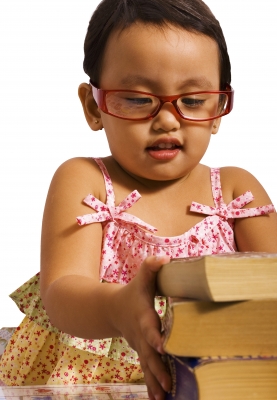
Faith-Based versus Secular Schools
If it is particularly important to you your child's early education includes religion, or if you are especially adamant it not, you will have narrowed down your choices of preschool quite a bit. If you're not sure, consider how important your religion is in your daily life. Are you comfortable having someone else teach religion to your child at an early age? Will the school reinforce your own family's religious values? Also know not all faith-based schools integrate religion into their programs to the same degree. With some, it is the basis for their whole curriculum, while others hardly mention it. You can tell to some degree how much focus a school places on religion by observing children's artwork on the wall and types of books and posters in the classroom. As always, though, definitely ask about it!
Secular schools do not integrate religion into their curriculum. In fact, many have policies stating they will not allow religious teachings or objects in their classrooms. Secular schools' focus is to serve and respect all beliefs and customs and not to unintentionally offend any family. These days, many have a multicultural approach to holidays, for example, integrating Christmas, Kwanzaa, Hanukkah, etcetera into their discussing of winter celebrations. They shy away from the obviously religious aspects of these holidays, however, as many families who choose secular preschools prefer their children not be taught religion at school.
Montessori
According to Wikipedia:
Montessori education is an educational approach developed by Italian physician and educator Maria Montessori and characterized by an emphasis on independence, freedom within limits, and respect for a child’s natural psychological, physical, and social development. The American Montessori Society (AMS) cite these elements as essential:
- Mixed age classrooms, with classrooms for children aged 2½ or 3 to 6 years old by far the most common
- Student choice of activity from within a prescribed range of options
- Uninterrupted blocks of work time, ideally three hours
- A constructivist or "discovery" model, where students learn concepts from working with materials, rather than by direct instruction
- Specialized educational materials developed by Montessori and her collaborators
- Freedom of movement within the classroom
- A trained Montessori teacher
The Montessori concept sees the child as the initiator of their learning. Children are allowed to explore and "work" on their own with materials. Often these environments are ideal for children to learn problem solving skills and develop confidence in themselves as problem solvers. On the downside, some believe Montessori schools do not put enough emphasis on social development, as most of the Montessori method addresses children working independently rather than in groups. Some Montessori children have trouble transitioning into mainstream public school at a later age due to the difference in overall structure in the two programs.
It is important to note there is no qualifying process by which a school may call itself Montessori. There is a wide variety of practices amongst Montessori schools, with one's classrooms and curriculum looking very different from the next. As always, it is important to visit the school and judge for yourself.
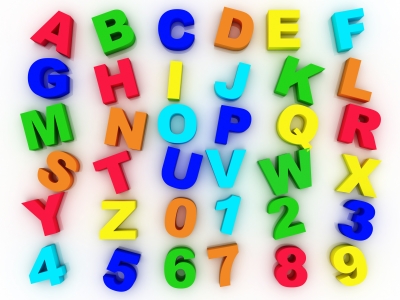
Poll
What do you want your child to learn in preschool?
Learning Through Play
You may be thinking, "this philosophy and teacher/child ratio stuff is all well and good, but I just want my kid to learn how to read and count so he's ready for kindergarten." I'm asking you to take a leap with me and step back from ABC's and 123's for a moment. While we all want our children to learn to read and do basic math, there are some more basic things to focus on in preschool. Before we sit them down and start drilling writing the alphabet, maybe we ought to teach them how to share materials with each other. Maybe we ought to teach them how to button their own pants and ask for help if they can't. Maybe we ought to make sure they have time to draw and paint whatever's in their heads, so they can learn to be creative while they're strengthening those fine motor skills in preparation for holding a pencil for writing one day. People often see letters and numbers as the basic building blocks for learning, but there is so much more that comes before that.
If your focus is to find a school that will recognize and encourage your child's potential, look for a school that sees your child as an individual with unique interests and needs. There is such a wide range of what is considered "normal development" when talking about preschool children. Are there four-year-olds ready to read? Yes! Their parents and teachers would do well to recognize this and provide the child with materials (i.e., books) and encouragement to develop his budding skill. Most four-year-olds, however, are not there yet, and all preschool children need fine motor development through drawing, cutting, and gluing and exposure to print in books and their environment in order to promote literacy. So, simply put, if the preschool teachers in a classroom are reading to children and allowing them to develop pre-reading and math skills through exploration and exposure to numbers and letters and simple, fun activities, score one for them. If they are teaching, modeling, and helping children learn self-help and social skills throughout the day as opportunity arises, score two. What you do not want to see in a preschool classroom are worksheets full of drill-and-practice style work and children who are required to sit down and do them.
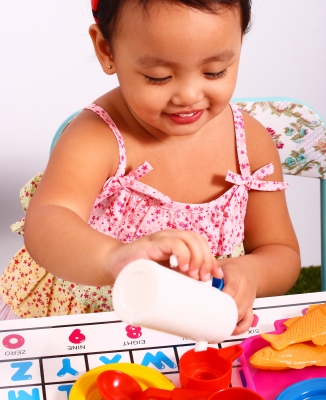
The Process of Choosing a Preschool
You probably won't follow this process exactly but use it as a general timeline or resource for ideas about where to gather information:
- Decide which kinds of schools you'd like to consider (religious, Montessori, in-home daycares, etc)
- Use google maps or other online resources to locate preschools fitting your parameters.
- Read online reviews of schools.
- Check with the licensing agency in your state for reports of violations.
- Gather information and recommendations from friends, neighbors, even Facebook.
- Make a list of two to four schools you'd like to call and/or visit.
- Call the schools to inquire about rates, hours, any basic information you could not gather online.
- Make appointments to tour the schools and talk with the director. *
- Narrow down your choices to one.
* You may want to make these initial visits without your child to avoid confusion and so you will feel comfortable discussing sensitive issues with the director.
Quality Preschool Classrooms
A quality preschool classroom will have the following:
- Objects labeled with print ("table," "chair," "door.")
- Space organized into specific areas or centers
- materials children may play open-endedly with (dress-up, blocks, crayons and blank paper)
- Well-kept materials (puzzles with all the pieces)
- Posted lesson plans, daily schedule, and a place for parents to sign children in and out
- Cleanliness (but give them a break if they just finished snack)
- A place for each child to keep personal belongings
- Children's artwork attractively displayed
- Lots of books, both fiction and non-fiction
Quality Preschool Teachers
A quality preschool teacher will have the following characteristics:
- Some formal child development or early childhood education training (Actual licensing requirements vary from state to state.)
- A warm, calm, friendly demeanor towards children and adults (They should greet both you and your child when you enter the classroom.)
- Knowledge that each child is unique and needs different things from her/him
- A willingness to communicate with parents regularly via email, phone, or in person
- A command of the classroom allowing him/her to keep order with classroom rules appropriate to the children's ages (You are not going to get two-year-olds to stay in a line to walk to the playground no matter what you do.)
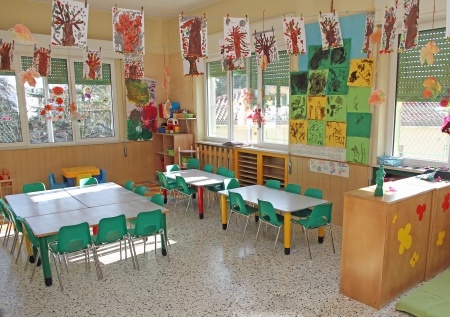
Questions to Ask
Some relevant questions to ask preschool directors and staff:
- Are you accredited by NAEYC?
- What are the educational/experience requirements for teachers?
- Do your teachers participate in ongoing educational classes?
- What is the maximum number of children that will be in my child's class?
- How many teachers will be in the classroom?
- Tell me about your curriculum.
- What is your discipline policy?
- What is your procedure for snacks and meals? (Some schools provide some food. Others require children to bring their own. Some schools are nut-free.)
- What is the daily schedule for my child's classroom? (When do they eat, nap, play outside)
- Must children be potty trained to attend? What is your procedure/policy for children potty training at school?
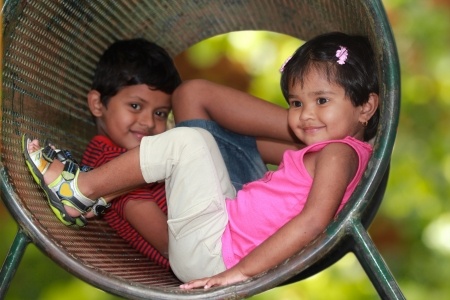
You Can Find the Right School
There are more quality options out there for child care and preschool every day. The key is finding the one that is a good fit for your child and your family's needs. Start with your basic parameters. How much can you spend? How far do you want to drive? What days/hours are you looking for? Narrow it down from there. One of your best resources are your neighbors. Definitely get recommendations from other parents, but remember what is a good fit for your best friend's kids isn't necessarily best for yours. You have to visit the schools and interview the staff to nail down whether or not it's what you want. Some children do better in more structured environments, while others need more leeway. It is key to consider your unique child's personality and whether or not you think it will mesh with her potential classroom and teacher. If you narrow it down and do your research, you can find a preschool you, and more importantly your child, will love and make you feel confident your child is well-cared for, learning, and having fun.

